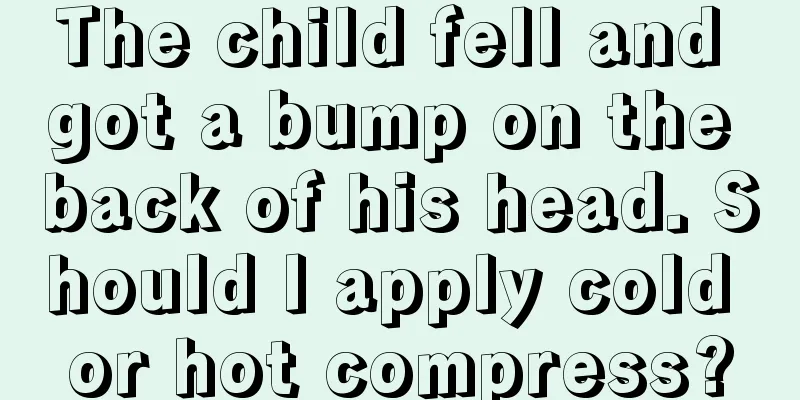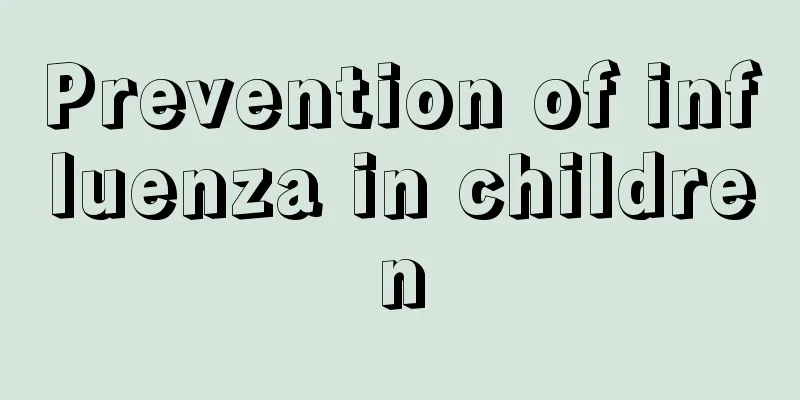The child fell and got a bump on the back of his head. Should I apply cold or hot compress?

|
We all know that children are prone to falling when they are learning and walking, and they are likely to hit the back of their heads after falling. Many parents believe that hitting the back of the head is a serious problem, especially if a bump is formed on the back of the head, which may cause the child to have a mild concussion. Therefore, some parents will use a towel to quickly remove the bump. So, if a child falls and has a bump on the back of his head, is it better to apply cold or hot compress?
If you sprain your ankle, everyone around you wants to help you relieve the pain. Some people say to soak your foot in ice water, while others say not to do that and use a hot water bottle instead! Who should you listen to? The speed of recovery after an injury has a lot to do with whether the initial treatment was appropriate. In the past, the generally accepted practice was to use ice first after an injury to reduce swelling, but then quickly switch to hot compresses or hot water to promote wound healing. Modern medicine believes. Unless there are special circumstances, after an injury (contusion, sprain, bruise, ligament tear, muscle and soft tissue injury, etc.), ice packs should be used instead of heating for at least the first 48 hours. This practice has been widely adopted in the American sports community. The role of ice is not only to reduce blood flow to the injured area, but also to control bleeding and swelling in the injured area and speed up the recovery process. Why can't you use hot compresses or soak in hot water in the first two days after an injury? Because if the temperature of the injured area is high, the blood flow there will increase, making the swelling and pain of the injured area worse; if small blood vessels rupture in the injured area, the amount of bleeding will increase, making it difficult to absorb the hematoma later, and delaying the recovery process.How to apply cold compress? Generally, in the first two days after the injury, use an ice pack for 10 to 20 minutes every 1 or 2 hours. The ice pack should be separated from the skin with a towel, bandage or something similar. If the injured hand or foot, you can also soak it directly in ice water, no more than 15 minutes at a time. In addition to cold compress, there are three things you should do in the early stages of injury First, let the injured part rest and do not move; Second, bandaging the wound properly can also reduce swelling; 3. Raise the injured part appropriately, slightly higher than the heart, to reduce blood flow. Do not apply ice if: If the wound has blisters or breaks, that is, it is an open wound; people who are particularly sensitive to low temperatures or have cardiovascular diseases should use it with caution. Be careful not to cause frostbite when applying cold compresses; it is sufficient to use ice only until the skin feels cold enough. You cannot sleep while applying cold compress. If you use chemical ice packs, be extra careful to prevent frostbite or chemical burns. Be especially careful to prevent frostbite in the elbows and knees because the nerves in these areas are closest to the skin. When the swelling of the injured area is under control and begins to subside, it is helpful to apply warm compresses. Increasing the temperature can promote blood circulation and has many benefits in promoting wound healing and recovery. Temperature can reduce pain, relax muscles, and also reduce joint stiffness; hot compress can dilate local blood vessels and promote hematoma absorption. There are also two methods of warming and hot compressing. One is warming by hand, which is to put a hot water bag or a bottle of hot water on the injured area; the other is warming by wet method, which is to apply a hot towel or soak the injured area in warm water. The warm method has a good heat-transmitting effect. When using a hot water bottle or bottle, just like using an ice pack, you should also separate it from the skin with a towel or other object, and do not use it for more than 20 to 30 minutes at a time to prevent burns. However, if a person has a fever or has an infection somewhere in the body, hot compresses should not be used. |
<<: Children's skin itchy wheals
>>: What is the cause of the 9-year-old child's eye twitching?
Recommend
How to change a child’s bad temper?
Nowadays, many families have only one child, and ...
Massage techniques for diarrhea in children
Children will have many uncomfortable symptoms af...
What should I do if my child gets prickly heat?
The causes of prickly heat are well known, and th...
What to do if your two-year-old baby doesn't have a bowel movement for three days
What to do if your two-year-old baby doesn't ...
Is it good for children to take a bath every day?
The weather is quite hot now and children sweat a...
What foods can stimulate the appetite and help digestion in children?
In summer, the temperature is high and people swe...
Why is my child short of breath?
Children are the core of a family. They are raise...
How to tell if your child has asthma
Children's respiratory tract is very fragile,...
What mattress is better for children?
Sleeping is something that every one of us needs ...
What to do if a 3-year-old child has a high fever and convulsions
Fever is a common disease in children, and most o...
What are the characteristics of pathological café-au-lait spots?
Café au lait spots are a type of common spots. Th...
How to treat blisters in children’s throat?
Children in childhood have relatively poor physic...
What are the symptoms of high myocardial enzymes in young children?
When taking biology or chemistry classes, people ...
Are probiotics useful for neonatal jaundice?
It is very hard for pregnant women to be pregnant...
Why is the newborn baby so irritable?
While welcoming the arrival of a newborn, every f...









